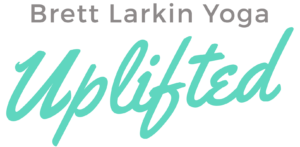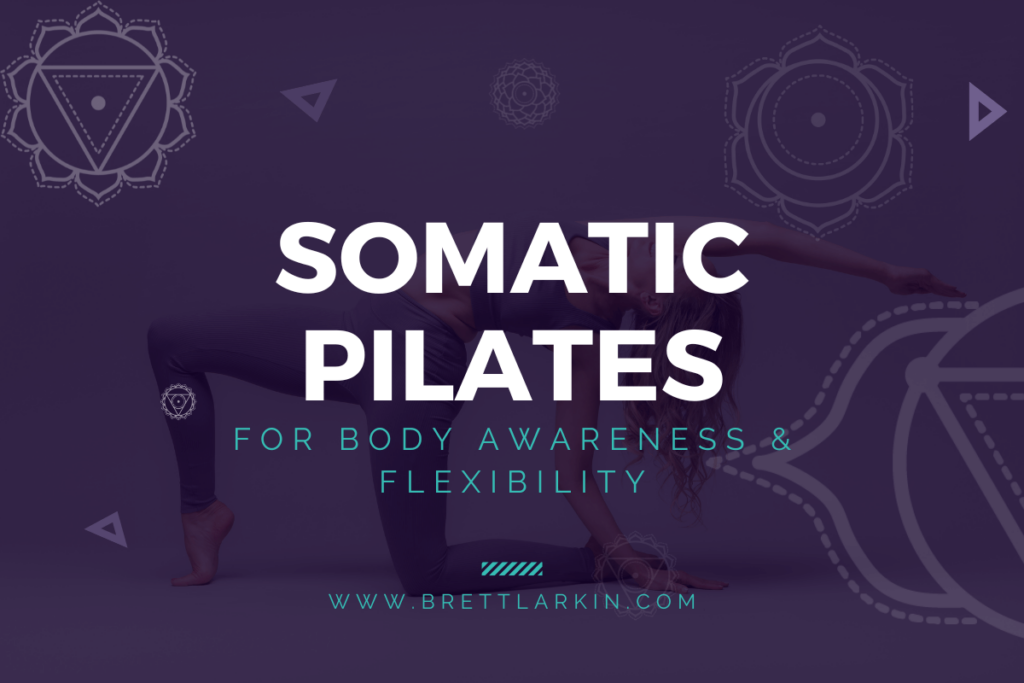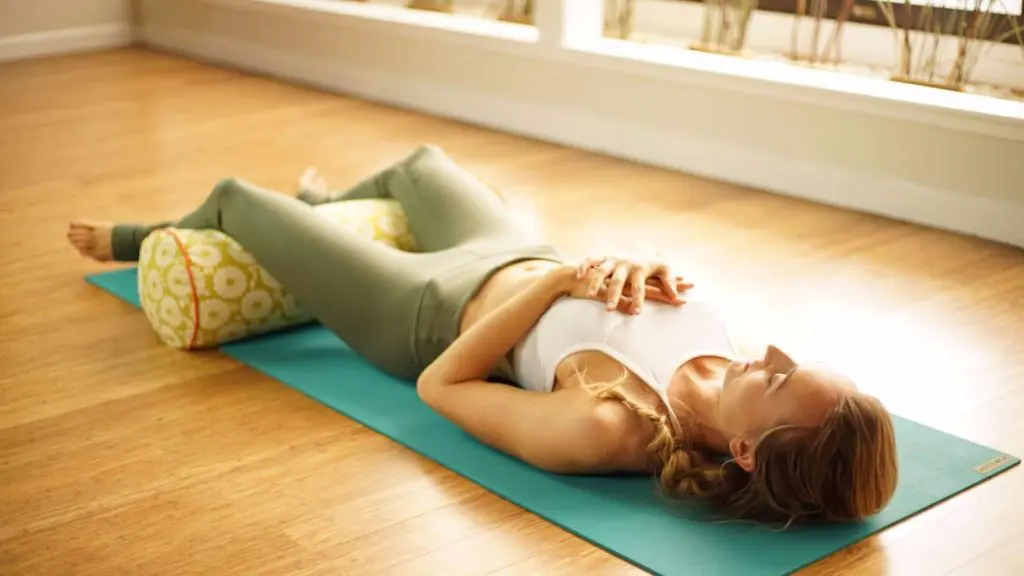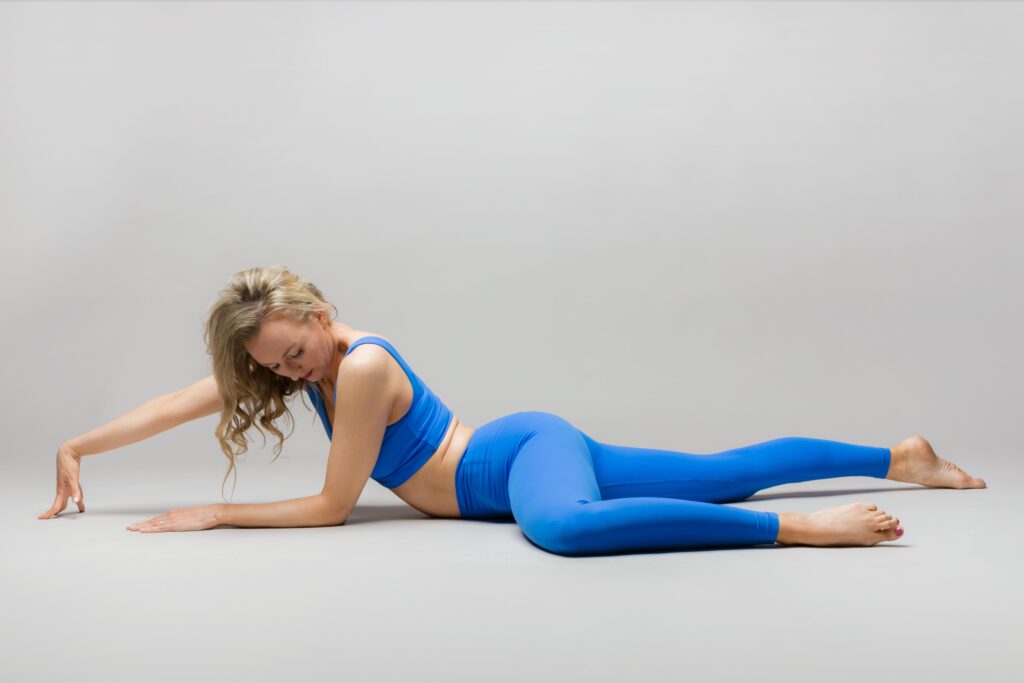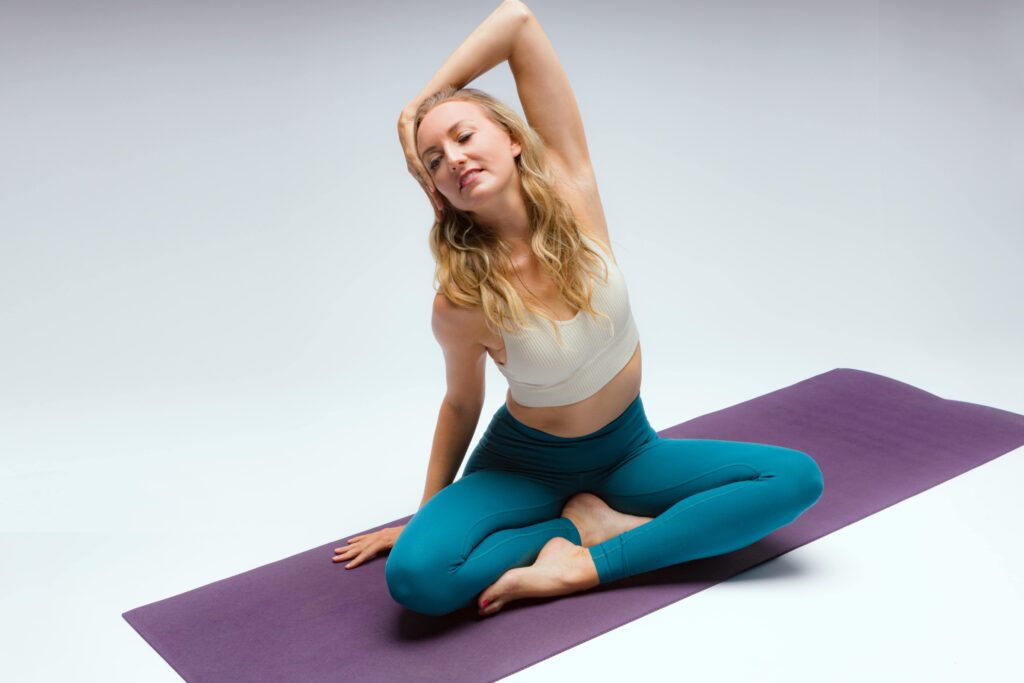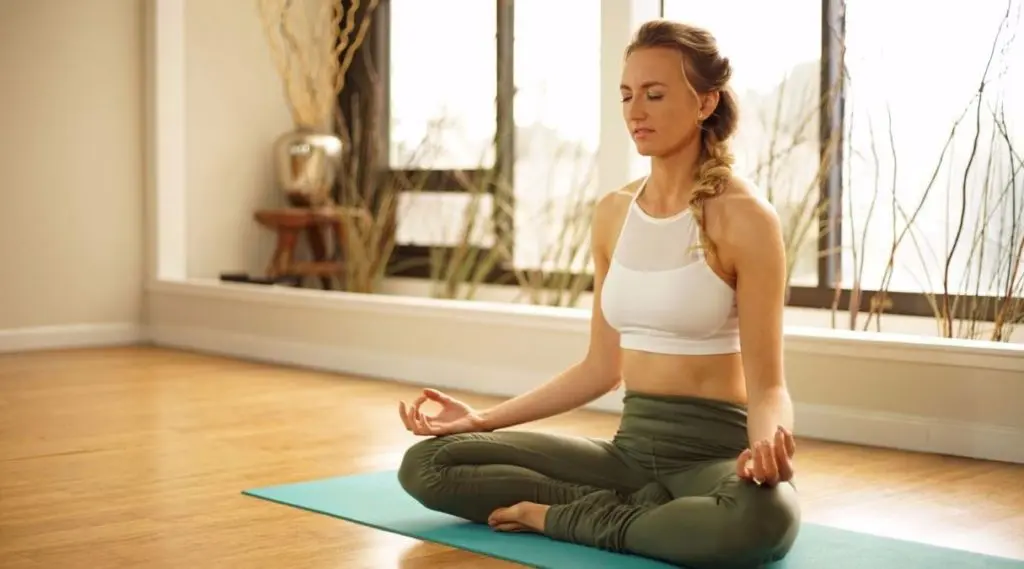Have you ever felt like your body is holding onto more tension than it should, or that your movements don’t feel as fluid as they once did?
Somatic Pilates might be exactly the body workout you need.
This practice combines the core principles of pilates exercises with a deep focus on somatic principles, like body awareness, inviting you to slow down and really tune in to how your body feels.
It’s not about rushing through exercises or pushing yourself to the limit—instead, it’s about moving with mindfulness, releasing tension, and reconnecting with your body in a more compassionate and thoughtful way. It’s the ultimate way to reduce stress and relieve tension.
With somatic practices, you’ll learn to move with intention, focusing on your breath and how each movement affects your physical well being.
By prioritizing fluidity and relaxation, you can break free from tightness, improve flexibility while building strength, and increase your overall sense of well-being.
Whether you’re new to Pilates or looking for a way to bring more ease and awareness into your yoga practice, Somatic Pilates offers a refreshing, nurturing approach that helps you strengthen your body and mind at the same time.
What Is Somatic Pilates?
Somatic Pilates is a movement practice that blends traditional Pilates principles with a focus on somatic awareness—being fully present with your body’s sensations as you move.
This method offers a fully body workout and encourages slow, mindful movements that help release tension and build strength in a more fluid and gentle way.
Instead of simply focusing on the number of repetitions or the intensity of the workout, Somatic Pilates emphasizes the quality of the movement and how it feels in your body.
The goal is to develop better body awareness, promote relaxation, and improve movement patterns.
I believe this practice not only strengthens the body but also nurtures a deeper connection between the mind and body, helping you move with greater ease and vitality. No matter what content you’re currently viewing, you can find video recommendations a customized for exercises best suited to you and to build core strength.
Experience My Somatic Yoga Workshop (usually $67) FREE!👇
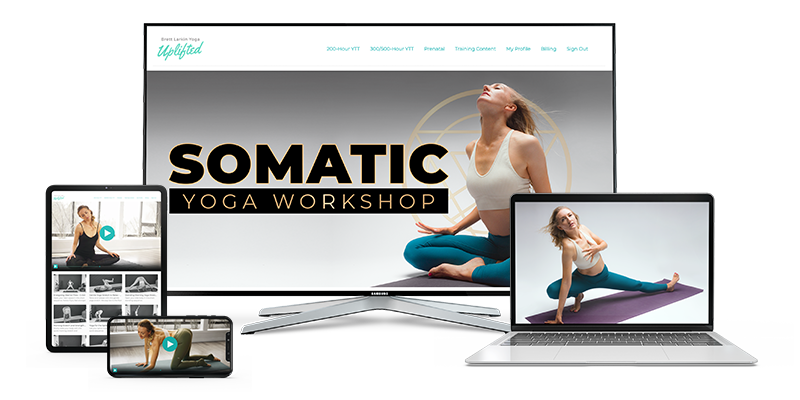
Benefits Of Somatic Pilates
Somatic Pilates offers a wide range of benefits, just like the benefits of somatic yoga, that go beyond just a typical workout.
The integration of mindful movement helps soothe the nervous system, reduce chronic pain, and improve overall posture. Just like you would spend time managing your privacy settings, you can tend to your pain and wellness. Some key benefits include:
Pain relief
By releasing tension from deep within the body, somatic exercise can alleviate discomfort from conditions like back pain, hip tightness, and neck stiffness. (Source: Journal of Bodywork and Movement Therapies)
Improved body awareness
The mindful, slow movements increase proprioception, helping you develop a better sense of how your body moves through space, which can enhance posture and prevent injury.
Enhanced flexibility
Somatic work encourages fluid, controlled movements, which can help increase flexibility over time by gradually lengthening muscles and connective tissues.
Stress reduction
The practice’s focus on breathwork and relaxation helps activate the parasympathetic nervous system, which calms the body’s stress response, leaving you feeling more relaxed and centered. You might want to try these somatic exercises to soothe the nervous system.
Better posture
Somatic practice strengthens the core and aligns the spine, leading to improved posture and reduced tension in the upper back, shoulders, and neck.
These benefits make Somatic Pilates a unique and effective practice for enhancing both physical and mental well-being.
How Somatic Pilates Differs from Traditional Pilates
While both Somatic Pilates and traditional Pilates aim to build strength, flexibility, and body awareness, they differ significantly in their approach and overall effects.
Traditional Pilates is more structured and focuses on precise, controlled movements that are often performed at a faster pace and with an emphasis on muscle engagement.
Movements in traditional Pilates tend to be more rigid and goal-oriented, aiming to strengthen specific muscle groups through repetition and form.
However, Somatic Pilates emphasizes fluidity, relaxation, and awareness. Movements are slow and deliberate, often performed with a focus on how the body feels rather than simply executing the exercise correctly.
This practice tends to activate the parasympathetic nervous system, which calms the body’s stress response and creates a more soothing, restorative effect.
Traditional Pilates might leave you feeling like you’ve worked hard physically, while Somatic Pilates is more about restoring balance and reconnecting with your body.
For example, in traditional Pilates, a movement like the “roll-up” might be performed in a quick, structured way to target abdominal muscles, while in Somatic Pilates, the same movement is done more slowly with a focus on breath and feeling, allowing the spine to articulate fully and gently.
Who Can Benefit from Somatic Pilates?
Somatic Pilates offers something for nearly everyone, whether you’re new to movement or have a long history of physical practice. It’s particularly beneficial for those looking for a more mindful, body-centered approach to fitness and movement.
This practice is ideal for anyone who wants to release tension, improve flexibility, and enhance overall body awareness without the intensity of a typical workout.
Individuals with chronic pain or tension
People experiencing discomfort from conditions like sciatica, fibromyalgia, or muscle tightness can benefit from the gentle, tension-releasing movements of Somatic Pilates.
Those seeking stress reduction and relaxation
If you’re looking for a way to manage stress and promote mental calm, Somatic Pilates offers a great way to reduce anxiety through mindful movement and breath. You can also practice somatic yoga for emotional release.
Athletes or dancers
Those looking to improve performance and body mechanics can use Somatic Pilates to enhance coordination, fluidity, and proprioception, which is crucial for optimized movement.
Beginners exploring gentle, accessible movement practices
Somatic Pilates is ideal for those new to exercise or who may find more intense workouts intimidating or painful. It provides a welcoming, easy-to-follow entry point for anyone looking to enhance body awareness and mobility.
Take my feminine energy quiz to get a recommended practice for balancing YOUR feminine energy 👇
How To Practice/Teach Somatic Pilates
If you’re interested in practicing or teaching Somatic Pilates, or how to teach somatic yoga, it’s essential to approach each movement with mindfulness, focusing on sensation rather than intensity. Here are some helpful guidelines for practicing this method:
Start with Breath Awareness
Begin by tuning into your breath. Take deep, slow breaths, allowing your diaphragm to expand fully with each inhale and contract naturally with each exhale. This helps to activate the parasympathetic nervous system, which promotes relaxation and prepares the body for movement.
As you or your students breathe, encourage a sense of calm and presence, allowing the breath to guide the flow of each movement. Pairing breath with movement creates a grounded, fluid experience, enhancing the mind-body connection.
Move Slowly and With Purpose
The pace of Somatic Pilates is slow and deliberate. Encourage yourself or your students to move through each exercise with intention, paying close attention to how the body feels with every shift and stretch.
For example, when performing a simple movement like a pelvic tilt or spine articulation, focus on the sensation of the muscles lengthening and contracting, rather than aiming for a specific number of repetitions or a ‘perfect’ form. The slower pace helps increase awareness, allowing for deeper release of tension and a more profound connection to your body’s natural movement patterns.
Focus on Alignment and Posture
Alignment remains important in Somatic Pilates, but it’s approached with flexibility and a focus on how the body feels rather than forcing it into rigid positions. Encourage neutral spine alignment and body awareness throughout the movements, paying attention to areas where tension tends to build, such as the shoulders, lower back, or hips.
For example, in exercises like the “cat-cow stretch” or “spine twist,” emphasize alignment but allow for softness and flow in the movement, so there’s room to adjust based on personal comfort. This enables you or your students to find their most comfortable range of motion without straining.
Incorporate Somatic Techniques
Somatic Pilates encourages deep body awareness and sensory exploration. Integrating somatic techniques such as body scanning can be a powerful tool. Invite yourself or your students to periodically check in with the body, noticing areas of tightness or discomfort. Direct the breath to these areas to encourage relaxation and release.
For instance, when performing movements that stretch the hips or back, guide the breath toward those regions, imagining the breath softening the tissues as you move. This technique enhances the body’s natural ability to release tension, making each movement feel more restorative. One technique I recommend is somatic shaking.
End with Relaxation
To close a Somatic Pilates session, allow time for relaxation and integration. Encourage a gentle cool-down, such as lying down in a supported position (like Savasana) or a soft stretch. Guide your students to bring awareness back to their breath, allowing the body to relax fully and absorb the benefits of the session.
A brief body scan or meditation can further deepen the sense of calm, helping to reset the nervous system and leave the body in a state of equilibrium. This final relaxation helps solidify the mind-body connection fostered throughout the practice, allowing for a lasting sense of peace and renewal.
Final Thoughts
If you’re ready to explore the deeper layers of your being, somatic yoga offers a doorway to not only physical health but also emotional freedom and self-discovery.
If you want to go even deeper, I invite you to join my Somatic Yoga Training Certification. This comprehensive training will equip you with practical tools and insights to enhance your practice and effectively guide others on their somatic yoga journey.
Next Steps
- Take a deep dive into embodiment and somatic yoga with my Somatic Yoga certification program.
- If you’re interested in practical kriya yoga as a way to improve your daily life and relationships, check out my Yoga for Self Mastery course.
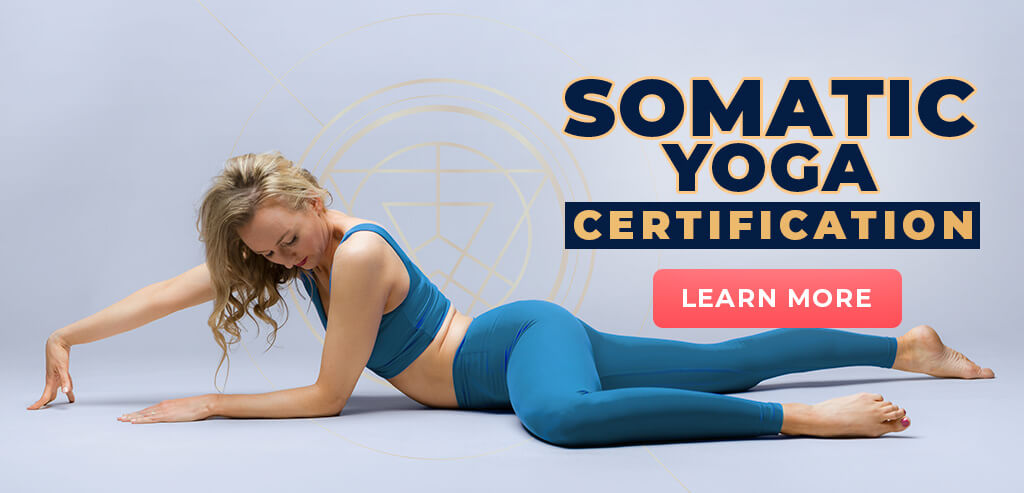
FREE Embodied Yoga Workshop (usually $67) Somatic Techniques & Cord Cutting Ritual

YOU MIGHT ALSO LIKE
- Somatic Yoga For Yoga Teachers: Everything You Need to Know in 10 Steps
- How Somatic Shaking Can Release Tension and Reset Your Nervous System
- Discover Somatic Pilates: Enhance Your Body Awareness and Flexibility
- Kundalini for Feminine Energy: Ignite Your Creative Power and Passion
- 6 Effective Somatic Yoga for Neck and Shoulders
- How to Teach Somatic Yoga: A Practical Guide for Instructors
- The Best Somatic Exercises for Grief: Find Healing Through Movement
- The Best Somatic Exercises for Anger Management and Emotional Release
- How to Teach Somatic Yoga to Beginners
- Best Somatic Yoga Poses for Emotional Release and Healing
- The Rich History of Somatic Yoga: From Origins to Modern Practices
- Somatic Yoga for Stress: Effective Techniques to Find Calm and Relief
- The Perfect Yoga Practice For Your Menstrual Cycle Energy Levels
- Enhancing Your Practice: The Benefits of Yoga and Nature Connection
- Gentle Somatic Yoga for Back Pain: Relief and Prevention Techniques
